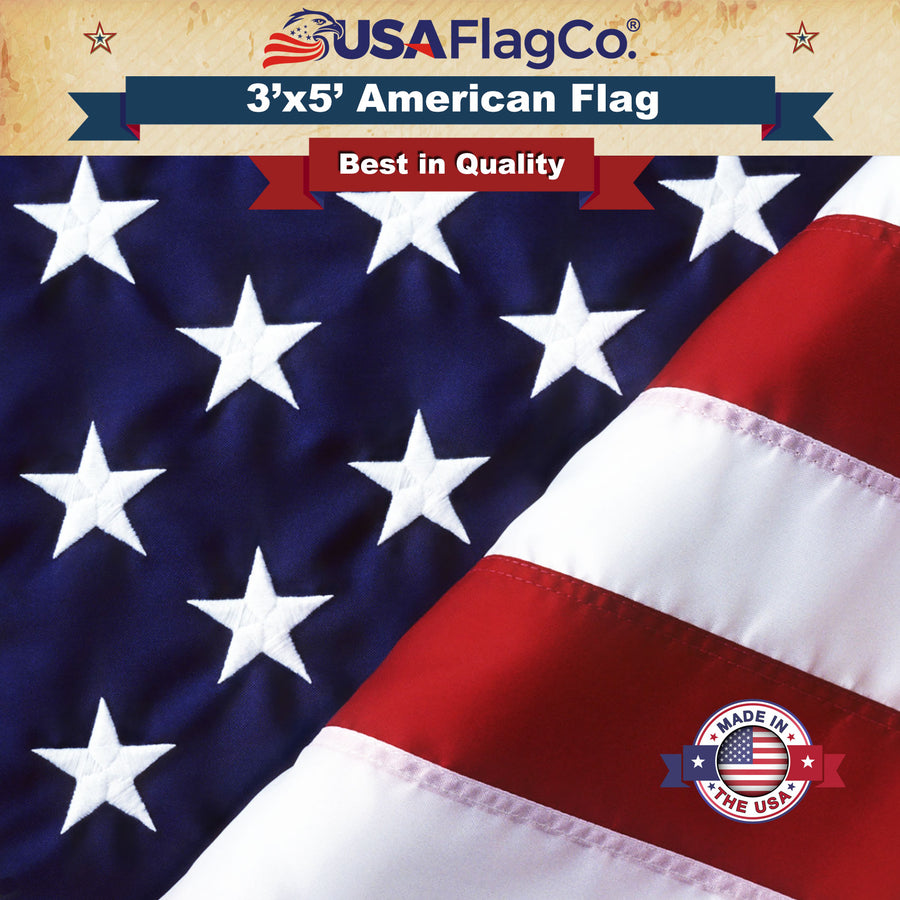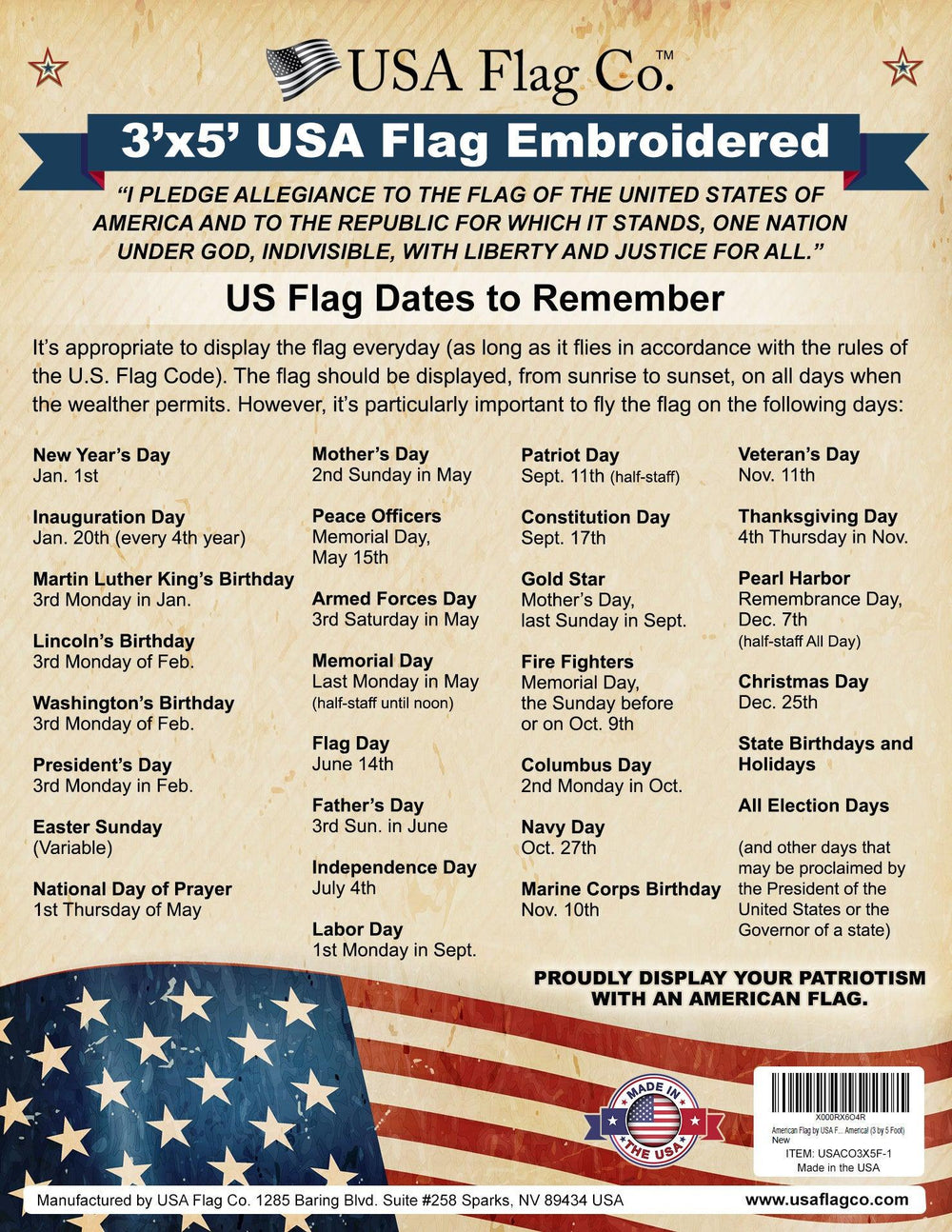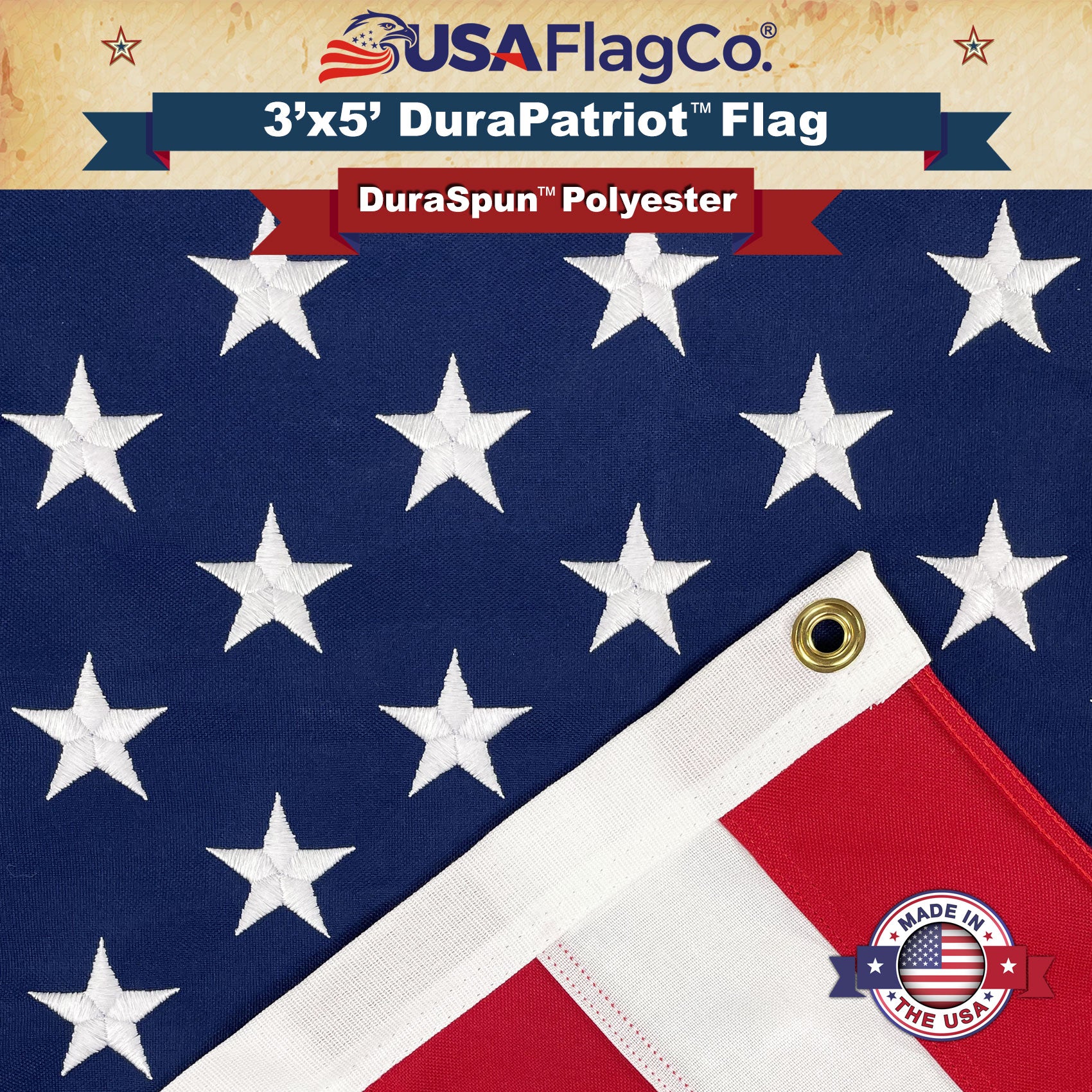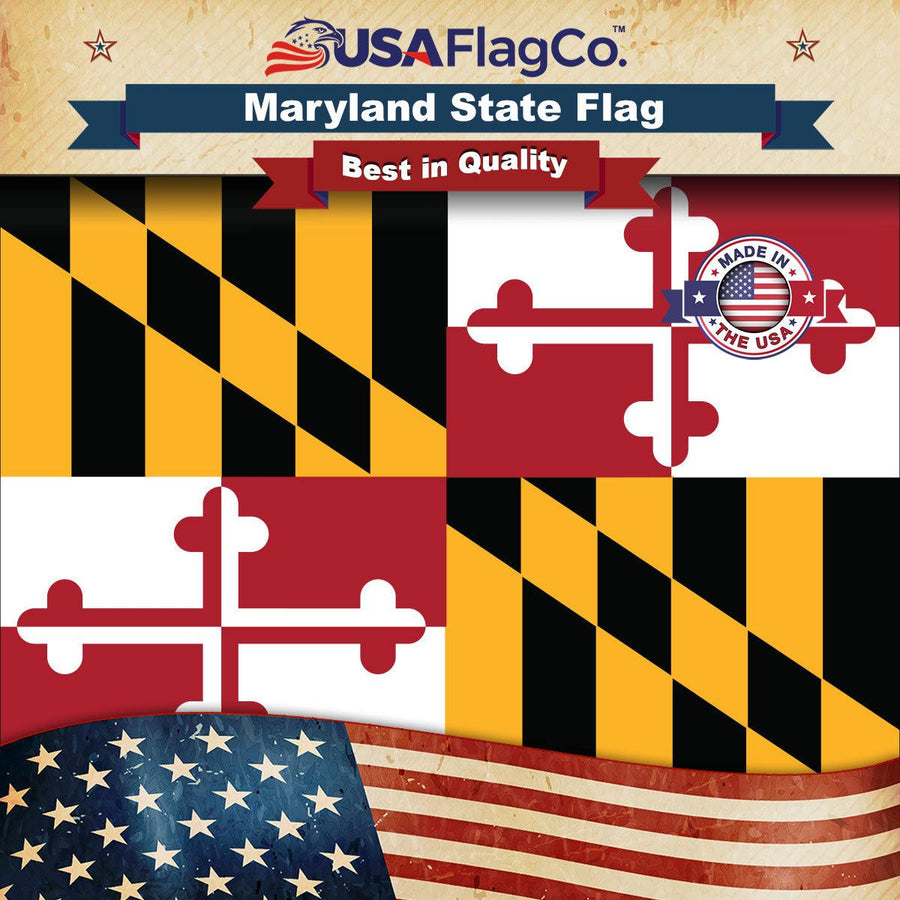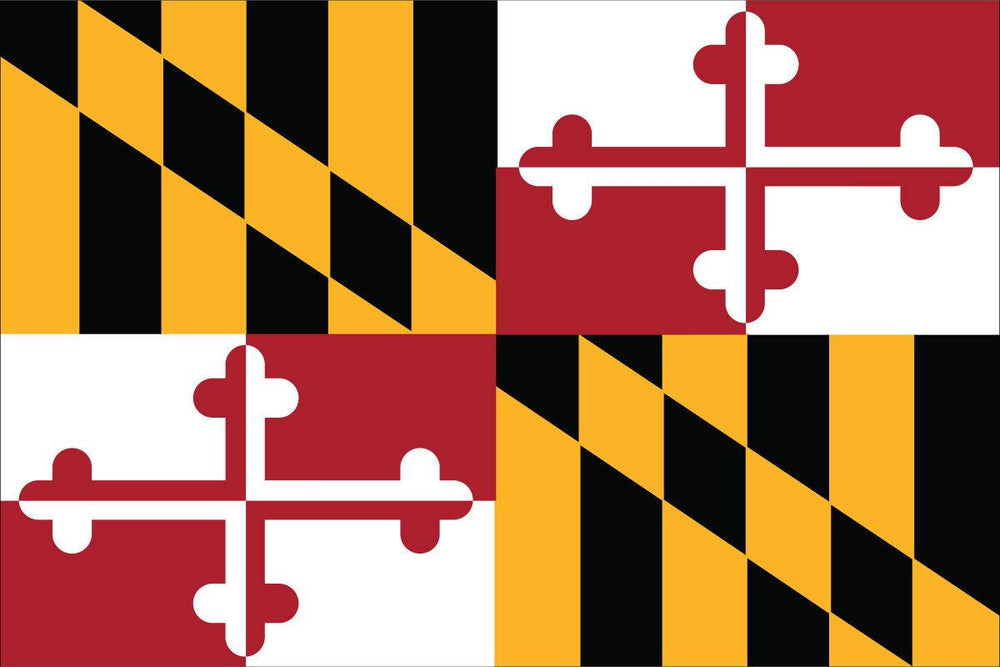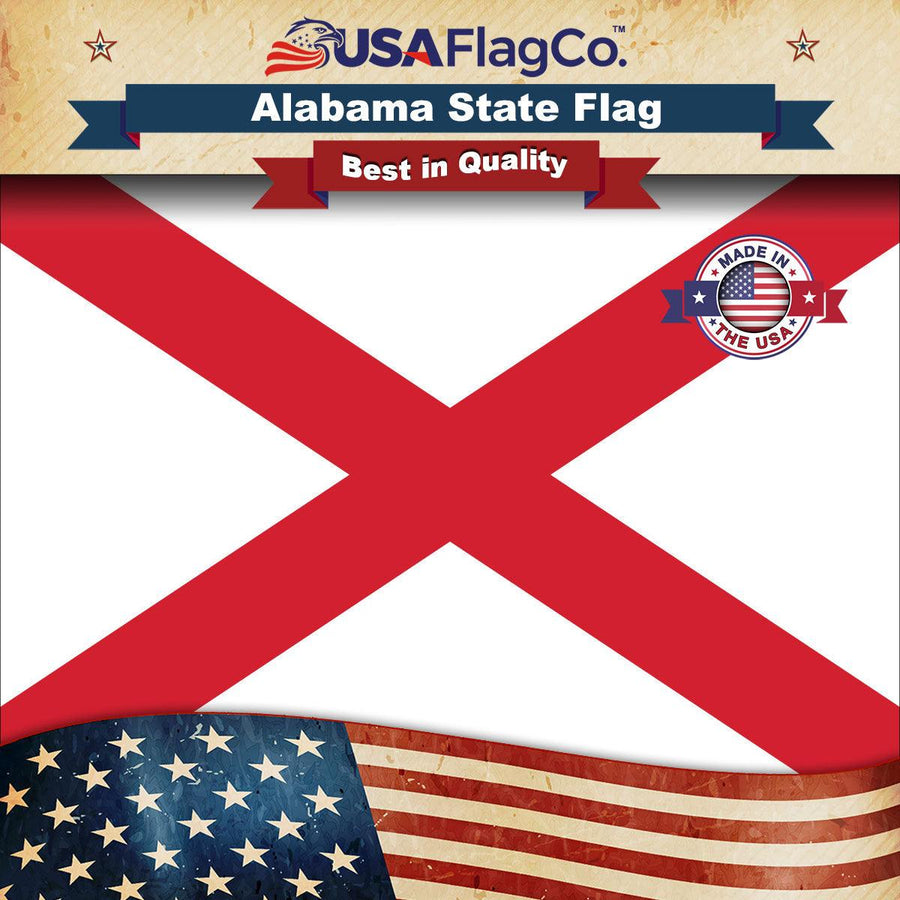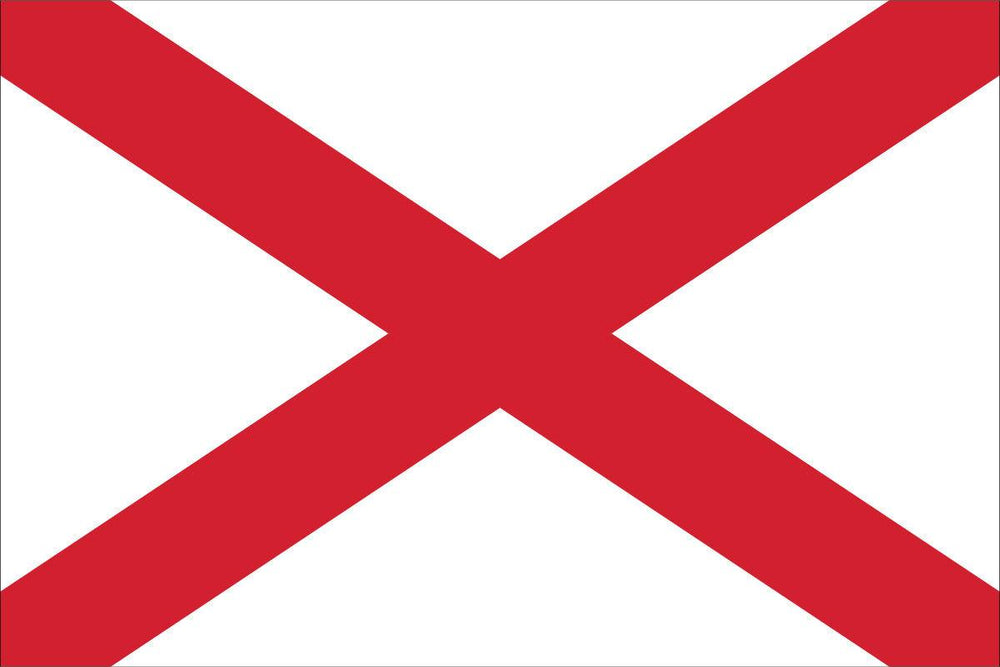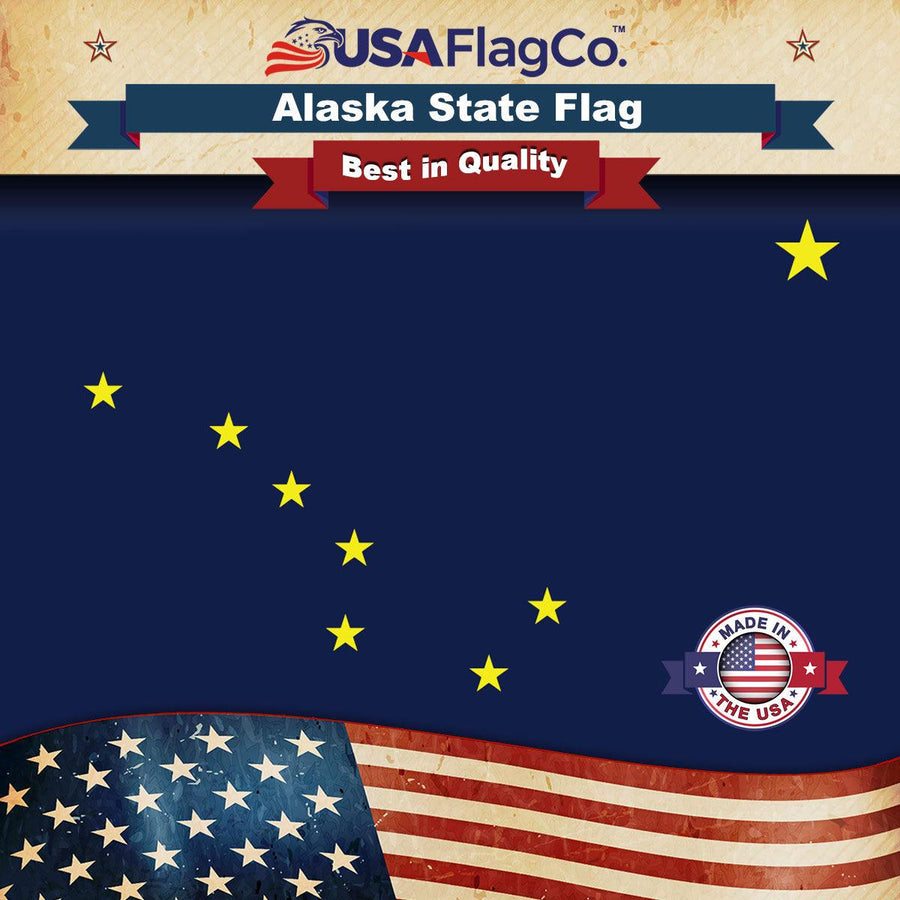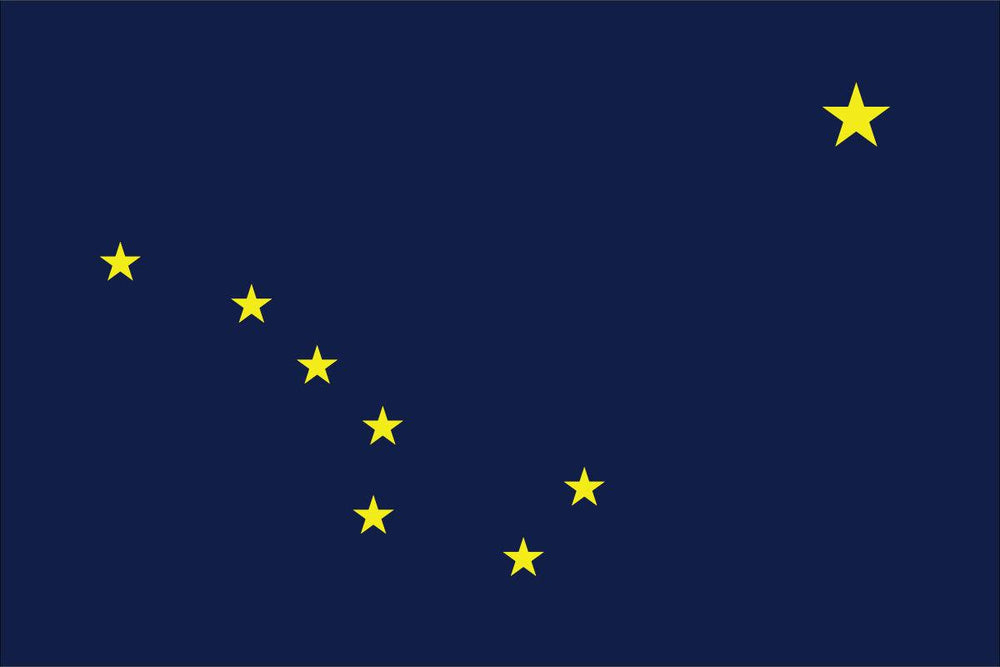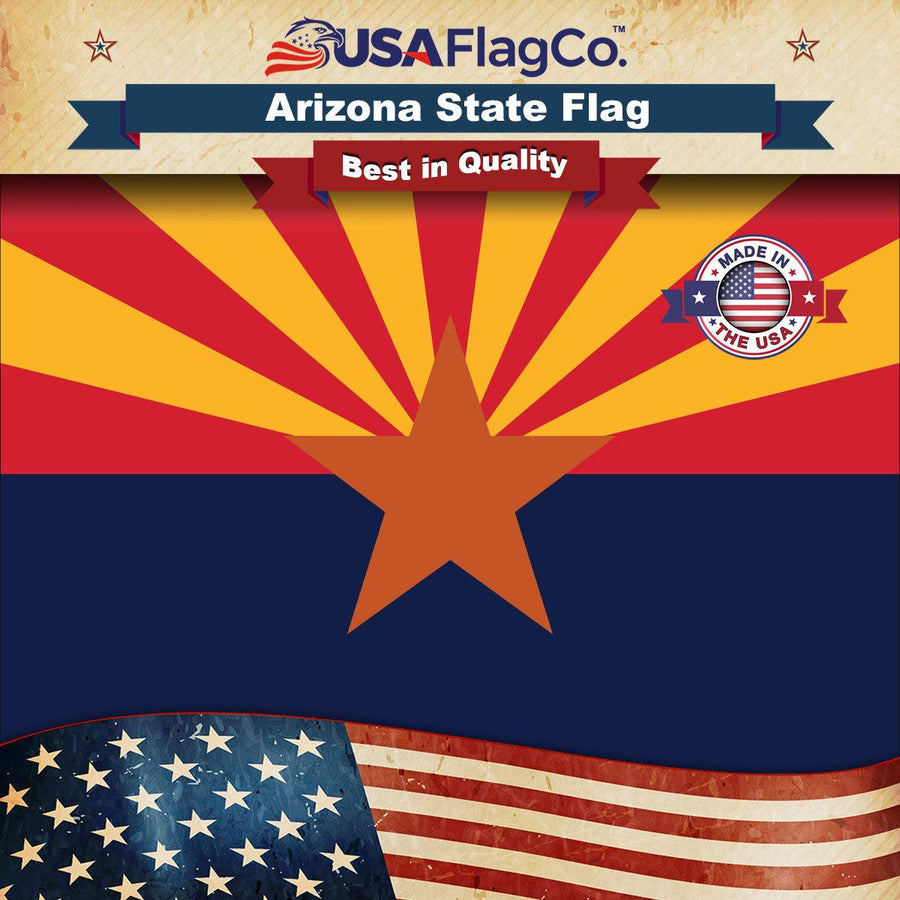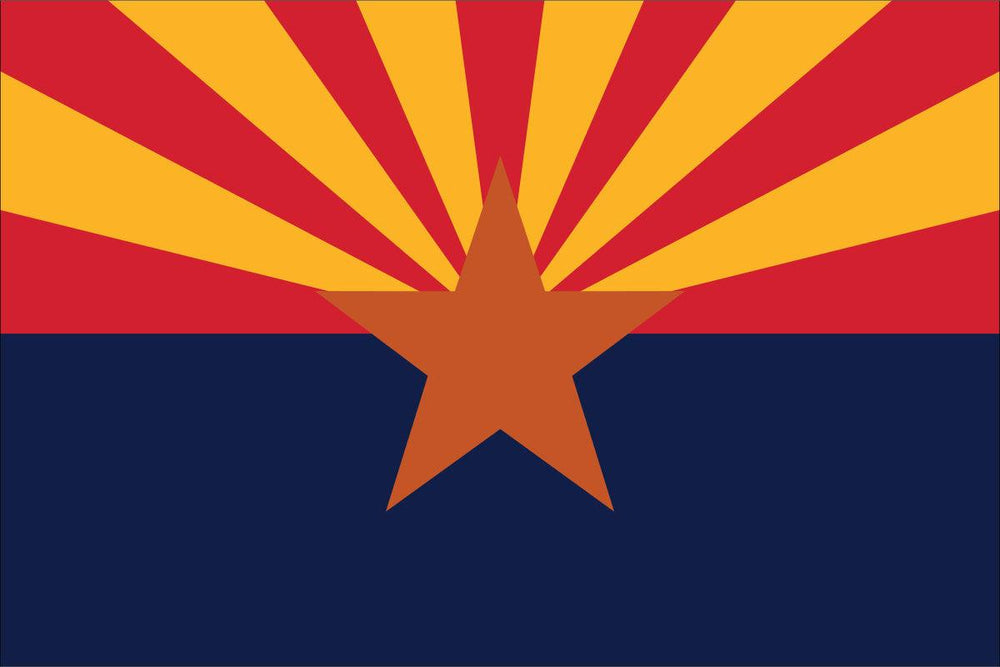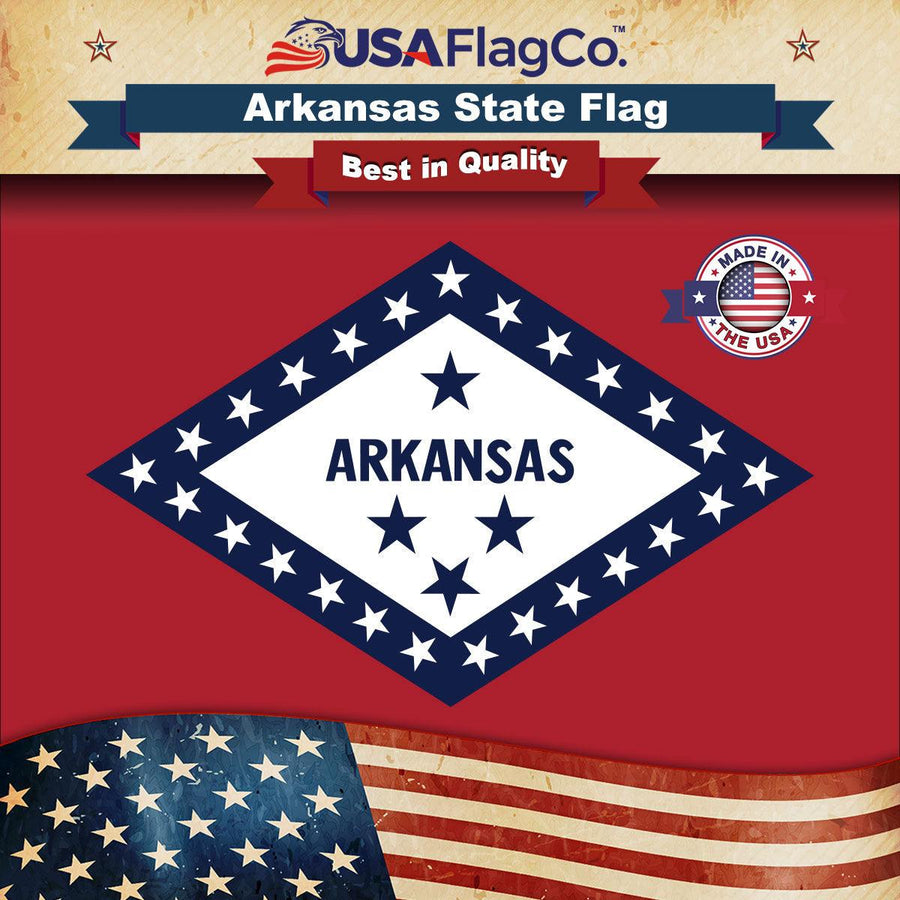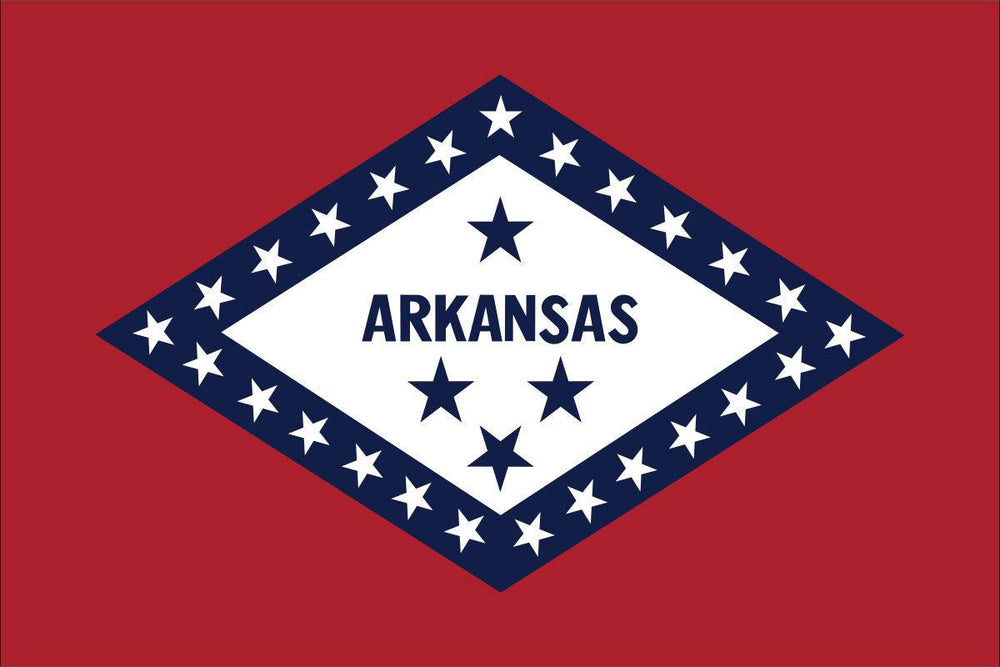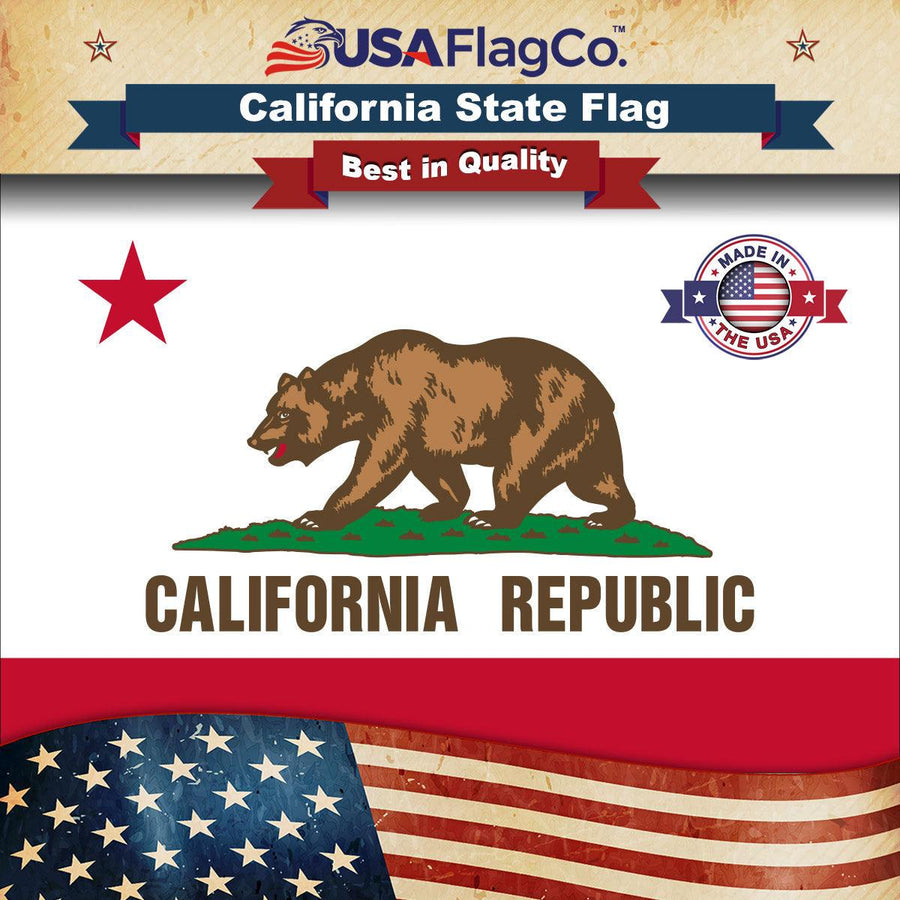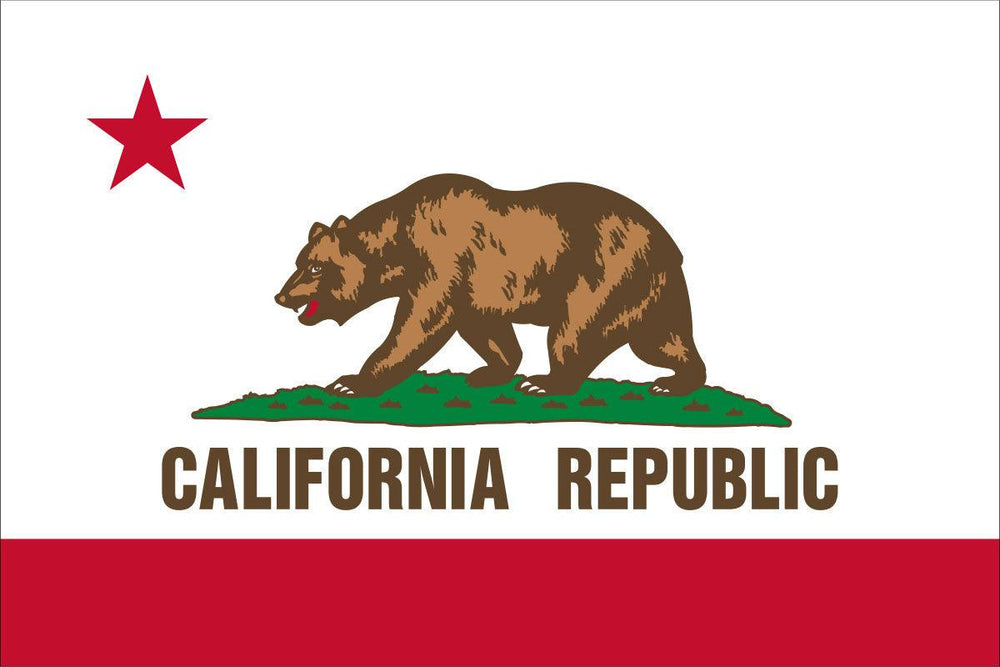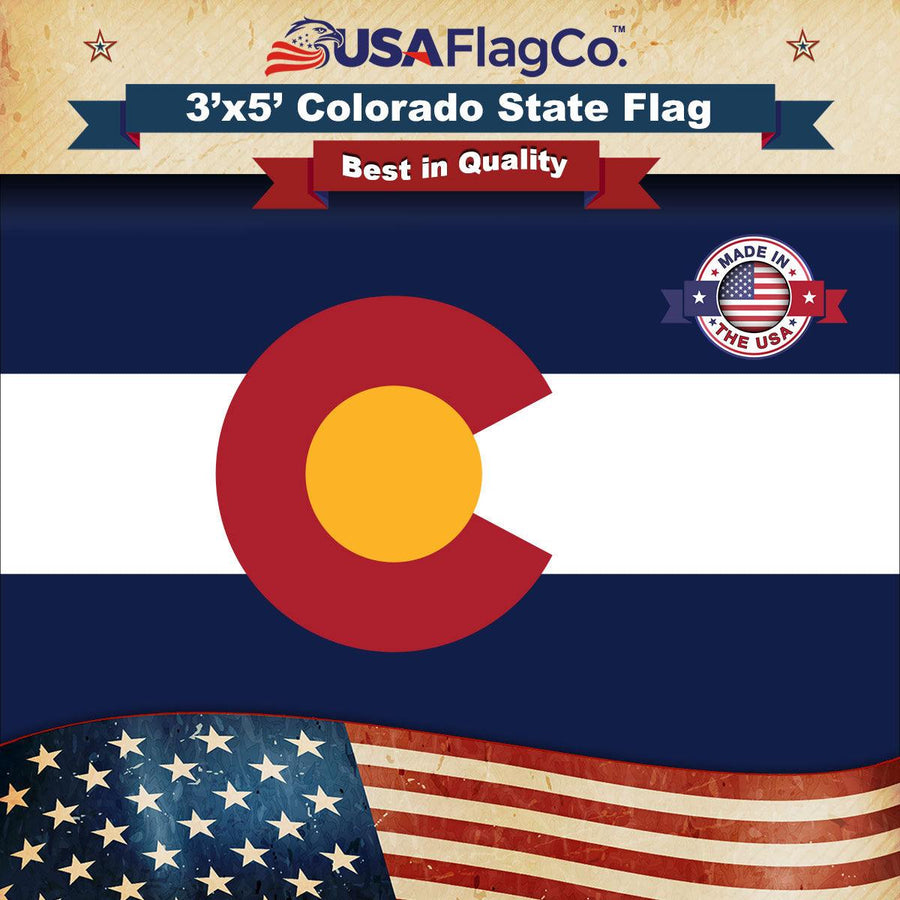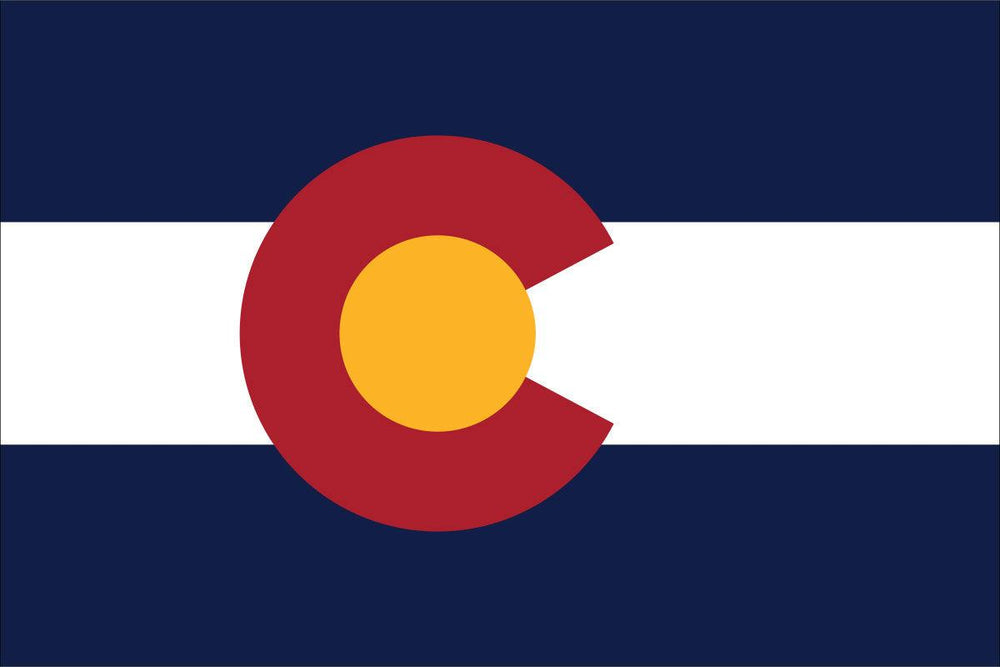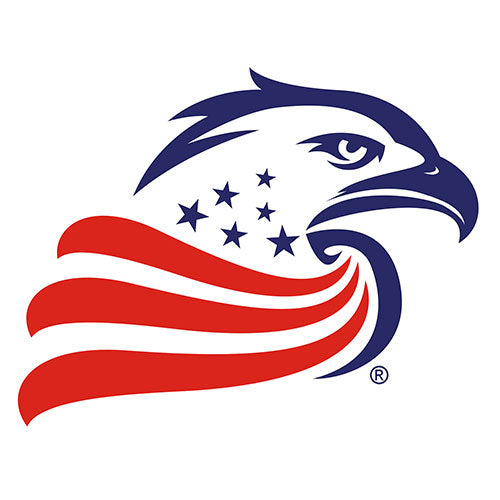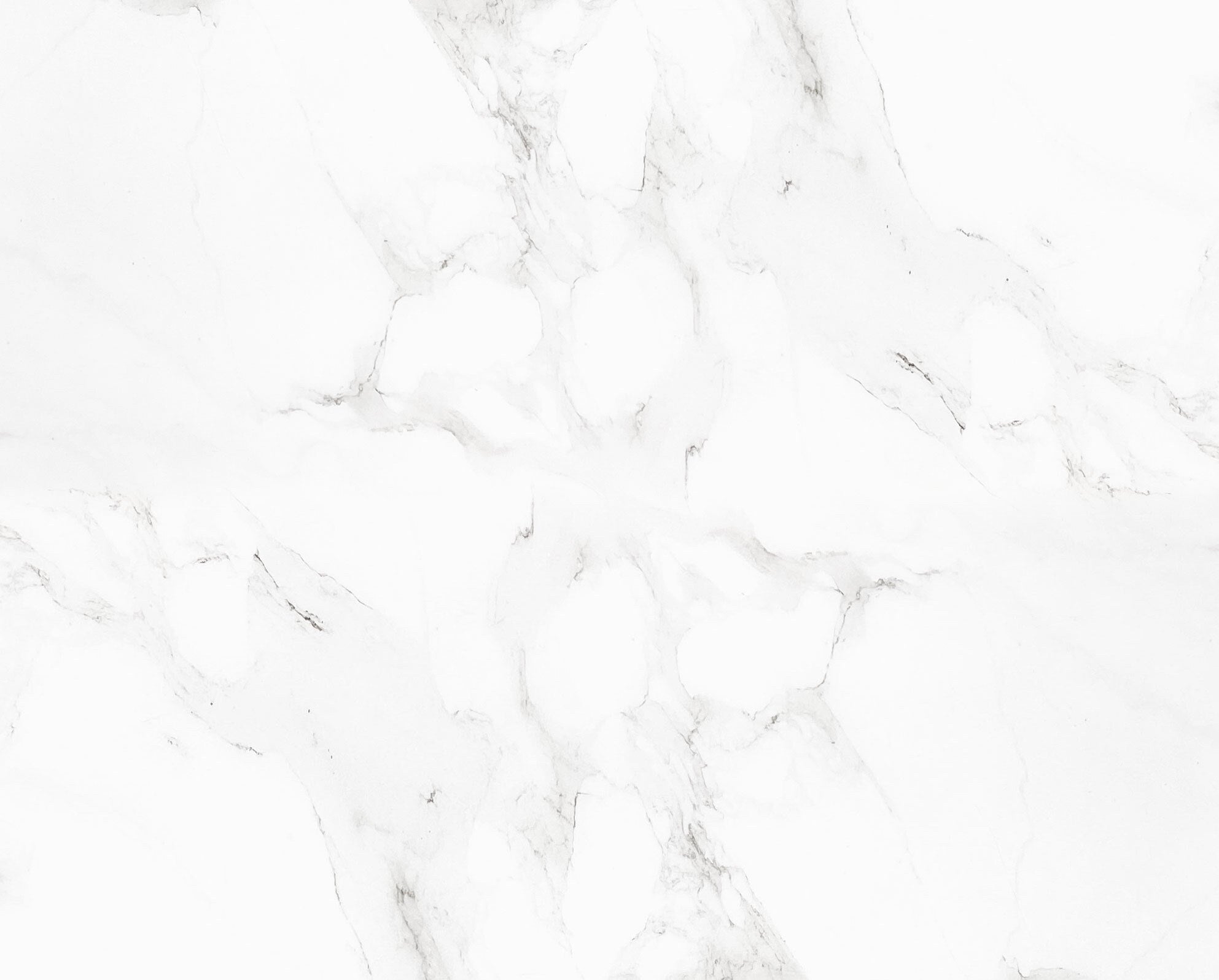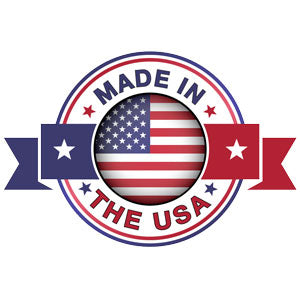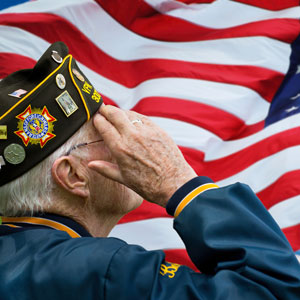Maryland Flag History
Adopted: March 9, 1904
Maryland Flag Design: The Calvert colors are described as gold and black, and the Crossland colors as red and silver, but in heraldry gold is depicted with yellow and silver with white. The cross in the Crossland's arms ends in demi-fleurs-de-lis and is properly a cross flory; the cross in the Maryland flag terminates in buttons, and in heraldry is termed a cross bottony. The word "bottony" is spelled several ways; the version used here conforms to the 1945 law that made the cross bottony the official ornament for a flagstaff carrying the Maryland flag.
The Maryland flag has been described as the perfect state flag — bold colors, interesting patterns, and correct heraldry—a flag that fairly shouts "Maryland." The design of the flag comes from the shield in the coat of arms of the Calvert family, the colonial proprietors of Maryland. George Calvert, first Lord Baltimore, adopted a coat of arms that included a shield with alternating quadrants featuring the yellow-and-black colors of his paternal family and the red-and-white colors of his maternal family, the Crosslands1. When the General Assembly in 1904 adopted a banner of this design as the state flag, a link was forged between modern-day Maryland and the very earliest chapter of the proprietorship of the Calvert family.
Despite the antiquity of its design, the Maryland flag is of post-Civil War origin. Throughout the colonial period, only the yellow-and-black Calvert family colors are mentioned in descriptions of the Maryland flag. After independence, the use of the Calvert family colors was discontinued. Various banners were used to represent the state, although none was adopted officially as a state flag. By the Civil War, the most common Maryland flag design probably consisted of the great seal of the state on a blue background. These blue banners were flown at least until the late 1890s.
The Calvert family coat of arms was reintroduced in Maryland in an 1854 law that called for a new great seal based on the Calvert design. The seal created pursuant to this act contained several inaccuracies, and in 1876 the General Assembly provided for a new great seal that conformed closely to the Calvert original.
Reintroduction of the Calvert coat of arms on the great seal of the state was followed by a reappearance at public events of banners in the yellow-and-black Calvert family colors. Called the "Maryland colors" or "Baltimore colors," these yellow-and-black banners lacked official sanction of the General Assembly, but appear to have quickly become popular with the public as a unique and readily identifiable symbol of Maryland and its long history.
The red-and-white Crossland arms gained popularity in quite a different way. Probably because the yellow-and-black "Maryland colors" were popularly identified with a state which, reluctantly or not, remained in the Union, Marylanders who sympathized with the South adopted the red-and-white of the Crossland's arms as their colors. Following Lincoln's election in 1861, red and white "secession colors" appeared on everything from yarn stockings and cravats to children's clothing. People displaying these red-and-white symbols of resistance to the Union and to Lincoln's policies were vigorously prosecuted by Federal authorities.
During the war, Maryland-born Confederate soldiers used both the red-and-white colors and the cross bottony design from the Crossland quadrants of the Calvert coat of arms as a unique way of identifying their place of birth. Pins in the cross bottony shape were worn on uniforms, and the headquarters flag of the Maryland-born Confederate General Bradley T. Johnson was a red cross bottony on a white field.
By the end of the Civil War, therefore, both the yellow-and-black Calvert arms and the red-and-white colors and bottony cross design of the Crossland's arms were clearly identified with Maryland, although they represented opposing sides in the conflict. As officers and soldiers returned home after the war to resume their peacetime occupations, the greatest challenge facing the country was reconciliation. Nowhere was the problem more serious than in deeply divided Maryland, where veterans who had fought under the red-and-white secession colors" had to be reintegrated into a state that had remained true to the Union.
As the slow process of reconciliation took place in post-Civil War Maryland, a new symbol emerged. A flag incorporating alternating quadrants of the Calvert and Crossland colors began appearing at public events. While the design derived directly from the seventeenth-century Calvert family coat of arms, for Marylanders of the 1880s the new banner must have conveyed a powerful message. The passage of time had gradually diminished the passions of former Rebels and Yankees, permitting them to work together once again. Now the colors they had fought under had come together as well, symbolically representing through this new flag the reunion of all the state's citizens.
Neither the designer nor the date of origin of this new Maryland flag is certain, but a banner in this form was known at least by October 1880. Flags incorporating four quadrants alternating between the yellow-and-black Calvert arms and the red-and-white Crossland arms appear in published sketches by Frank B. Mayer depicting the huge 150th birthday parade held in Baltimore that month. Eight years later, in October 1888, a large flag with the alternating Calvert and Crossland colors was carried by Maryland National Guard troops escorting Governor Elihu E. Jackson at the dedication ceremonies for the Maryland monument at the Gettysburg Battlefield. A year later, in October 1889, the Fifth Regiment, Maryland National Guard, adopted a flag in this form as its regimental color. The Fifth Regiment thereby became the first organization to adopt officially what is today the Maryland flag.
The adoption of this new flag by the Fifth Regiment helped popularize the design. The Fifth was the largest component of Maryland's military after 1870, and it played a conspicuous part in major public events both in and out of the state. Organized in May 1867, the Fifth Regiment was the successor organization to the Old Maryland Guard, a military unit formed in Baltimore in 1859 that dissolved when most of its officers and men went south in 1861 to join the Confederate Army.
True to its heritage, the original Fifth Regiment consisted primarily of Maryland-born former Confederate officers and soldiers. The new regimental color adopted in 1889, combining the traditional yellow-and-black "Maryland colors" with the red-and-white "secession colors" in the form of a bottony cross, must have seemed especially appropriate to members of the Fifth. The colors symbolically represented what had happened to the Fifth Regiment itself in the quarter-century since the Civil War. Originally denounced as a "Rebel Brigade," the Fifth had by the 1870s become Maryland's premier military organization, attracting Union veterans as well as former Confederates. From its inception, the Fifth Regiment had demonstrated through its prominent participation in public events and with its summer encampments in the north that former Confederates could be good soldiers and loyal citizens of the state and the nation.
The Fifth Regiment's new regimental color was not the only example of former Confederates perpetuating and thereby popularizing the use of the red-and-white Crossland colors and the cross bottony design. The monument on Culp's Hill at the Gettysburg Battlefield commemorating the Second Maryland Infantry, CSA, carries a cross bottony on each face, and the Maryland Line Confederate Soldiers' Home, established in Pikesville in 1888, featured a large cross bottony on service badges and on invitations to events sponsored. Beginning a custom that would later be officially recognized by law, the Fifth Regiment by 1905 had replaced the silver eagle on the flagstaff bearing its regimental color with a cross bottony.
In 1904 the General Assembly affirmed the popular support shown for a banner composed of alternating Calvert and Crossland quadrants by declaring it the State flag. In 1945, a gold cross bottony was made the official ornament for a flagstaff carrying the Maryland flag.
The Maryland flag, flown on a staff properly ornamented with a gold cross bottony, is therefore much more than a symbol of state sovereignty. The flag excels as a state banner because it commemorates the vision of the founders while it reminds us of the struggle to preserve the Union. It is a unique symbol of challenges met and loyalties restored, a flag of unity and reconciliation for all the state's citizens.
NOT ALL MARYLAND STATE FLAGS ARE THE SAME!
HERE'S WHY...
Extra care is taken in making these flags. Flag designs are researched to ensure that they are authentic and current. We use sturdy fabrics, allowing the flags to be flown outdoors, indoors, or carried in parades.
Constructed with 100% Heavy Duty Nylon (digital dyed) ★ Beautiful, brilliant colors ★ Resistant to wear and tear of sun & rain ★ Complete with heavy canvas heading & brass grommets to meet the most demanding commercial and residential uses.
- All outdoor flags are finished with heavy-duty thread, polyester heading, brass grommets, and four needle fly hem
- State flags constructed to precise specifications
- Flies in the slightest breeze
- Proudly Made In The USA
- Beautiful Presentation - This Maryland Flag makes an excellent gift for friends, parents, or to PROUDLY display on your HOME or OFFICE.
HEAVY-DUTY NYLON OUTDOOR STATE FLAGS WITH SOLAR SHIELD
Our most popular and versatile outdoor Maryland flag, USA Flag Co. flags offer the optimum combination of elegance and durability for every purpose. The 100% nylon material provides a rich, lustrous appearance. Our flags have superb wearing strength due to the material’s superior strength-to-weight ratio and will fly in the slightest breeze. State flags are finished with strong, polyester canvas headings and spurred brass grommets, and four needle fly hem. The result is a flag that will be flown with pride year after year.
SOLAR SHIELD
- Rich, Vivid Colors
- Durable
- Fire-Resistant
- Mothproof
- Mildew Resistant
- Sheds Water
- Lightweight for Flyability
Add this Maryland Flag to your cart for Immediate Delivery Now.
Source:
Act 1895-383, Acts of Alabama, February 16, 1895.
Act 23-444, Acts of Alabama, September 26, 1923.
Alabama State Emblems, Alabama Department of Archives and History, nd.
30-DAY MONEY BACK GUARANTEE
USA Flag Co. wants you to be completely and perfectly satisfied, and that is why we offer a 30-day money back guarantee from the date you ordered your product(s). Now don't get me wrong, we'd love to know why you didn't like it, but only if you are willing to tell us. Otherwise, it's 100% satisfaction guaranteed return. No questions asked.
We take all the risk out of ordering by offering an unmatched satisfaction guarantee. We'll always do our best to take care of you.
100% SATISFACTION GUARANTEE!
Free standard shipping on orders over $60. Full shipping policy
This product is eligible for returns. Full returns policy
Frequently Asked Questions
This is the most common question asked in the industry and the most difficult to answer. No two flags will wear the same due to weather conditions and how often the flag is flown. Our flags offer the best stitching and highest quality materials to get your flag off to a great start.
Do not hang a flag where the wind will whip it against rough surface, such as tree branches, wires or cables or the outside of your home or building. Inspect your flags regularly for signs of wear. Repair any minor rips or tears right away this can be mended easily with a sewing machine or sewing kit. Keep the surface of the pole free of dirt, rust or corrosion that could damage or stain your flag.
We recommend that you hand-wash your flag with mild soap, rinse thoroughly and air dry. You can also use a dry cleaning service.
Exposing your flag to rain, wind, snow or high winds will shorten the life of your flag considerably. If you leave your flag exposed to the elements, it will greatly reduce the life of your flag.
Yes, as long as your pole is large enough to support the weight of the flags. The USA Flag must always fly at the top. The flag underneath should be at least one foot lower and be one size smaller than the USA Flag. Flags of other countries are not to be flown beneath the USA Flag.
If your flag is significantly faded, torn or tattered it is time to retire your flag. Your flag should be retired privately in a dignified manner. In addition, many local community organizations have flag disposal centers that will dispose of your flag for you.


